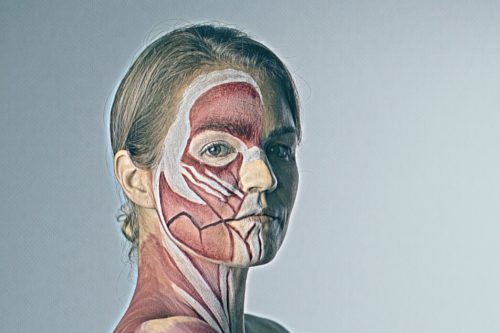What is facial muscle tone?

Normal Muscle Tone
Normal muscle tone means that the facial muscles have the correct amount of tension in their microscopic fibres when the muscles are at rest.
Normally our muscles are in a constant state of partial contraction, which keeps them firm and ready for action at all times. It is not under our voluntary control. Even when the facial muscles are relaxed, the healthy facial nerve sends nerve impulses or signals from the brain to the muscle fibres to keep them contracting at a very low level and so maintain their shape and firmness.
Normal muscle tone means that the muscles will be able to contract with the correct force or effort on command and without difficulty. For example, when you want to smile, the smile muscles will contract to create a smile which reflects how you feel.
High Muscle Tone
High muscle tone means that the facial muscles have too much tension at rest. The muscle is tight and tense even though it is not doing anything.
If you wanted to smile and the tone in your smile muscle was high, then you would have to concentrate very hard to try and make a smile. It would not be the smile you ask for and will be unlikely to reflect how you feel.
The smile muscles will be stiff and thick and struggle to contract to form a smile. They are receiving too many electrical impulses from the brain, way beyond that required for normal muscle tone.
Low Muscle Tone
Low tone in the facial muscles means that there is not enough tension in the muscles. The muscles will have lost their shape and definition.
They may feel mushy or floppy and you will have lost the ability to control facial movements on the affected side. You will find it very difficult or impossible to create any movement when the tone of the muscle is low or absent. The injured facial nerve is unable to send signals to keep the muscle fibres in a constant state of partial contraction. The muscles will therefore be unable to contract to produce a smile that reflects how you feel.
Read more
Facial muscles and their function
Photo by Alexander Jawfox on Unsplash
